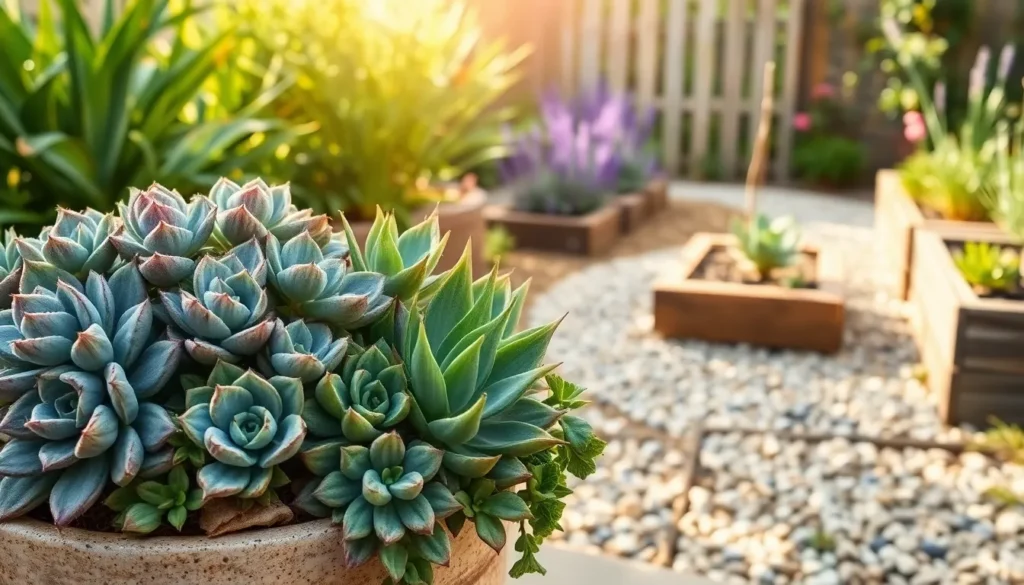Creating a low-maintenance garden is like weaving a tapestry of nature’s beauty that thrives with minimal intervention. Whether you’re a seasoned gardener looking to simplify your routine or a novice eager to dip your toes into the gardening world, a low-maintenance garden offers the perfect blend of enjoyment and ease. Imagine a space where plants flourish with little more than a gentle nudge from you, leaving more time to savor the serenity of your green sanctuary. This approach not only simplifies your gardening tasks but also allows you to appreciate your garden’s natural rhythms and beauty without the constant hustle.
In this article, we’ll explore the art of cultivating a garden that practically takes care of itself, offering tips and strategies that cater to both beginners and veterans. You’ll discover how to select resilient plants, design with intention, and implement smart watering techniques that reduce your workload while enhancing your garden’s vitality. Delving into the world of mulching and companion planting, we’ll provide you with the tools to create a sustainable ecosystem that supports your garden’s health all year round. By the end, you’ll be equipped with the knowledge to transform your outdoor space into a lush, low-maintenance haven that feels both achievable and rewarding.
Select Drought-Tolerant Plants
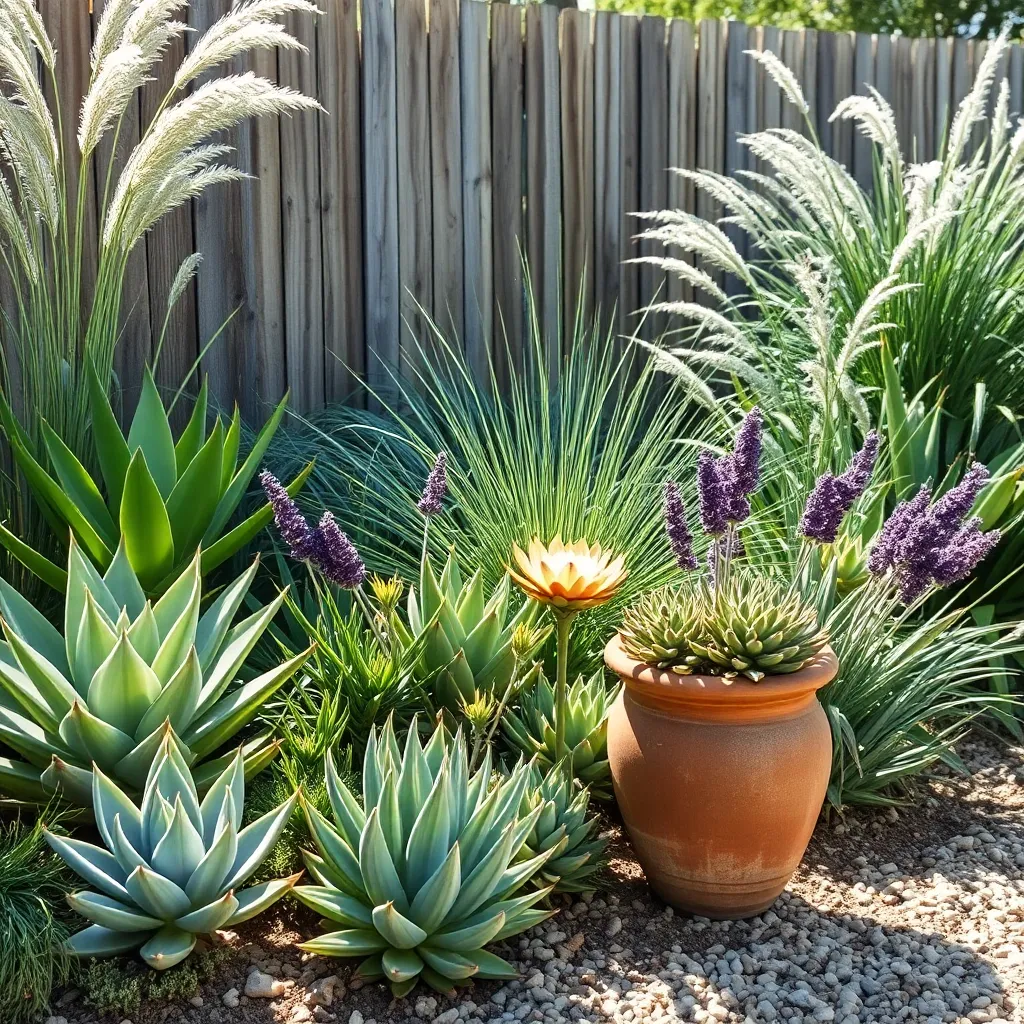
When creating a low-maintenance garden, selecting drought-tolerant plants is a smart strategy. **These plants require minimal watering**, making them perfect for gardeners who want to reduce their water usage and time commitment.
Consider adding **succulents** like sedums and hens-and-chicks, which thrive in well-draining soil and sunny spots. These plants store water in their leaves, allowing them to survive dry periods with ease.
For a splash of color, try planting **lavender or Russian sage**, both of which are known for their resilience and beautiful blooms. These perennials prefer full sun and can tolerate poor soil conditions, making them ideal for low-maintenance gardens.
**Bermuda grass** is a great option for those looking for drought-tolerant ground cover. It establishes quickly and requires less frequent mowing, thriving in sandy or loamy soils with minimal irrigation.
To ensure success, mulch around your drought-tolerant plants to help retain moisture and suppress weeds. This simple step can further reduce the amount of care your garden requires, allowing you to enjoy a lush and vibrant space with minimal effort.
Opt for Mulching Techniques
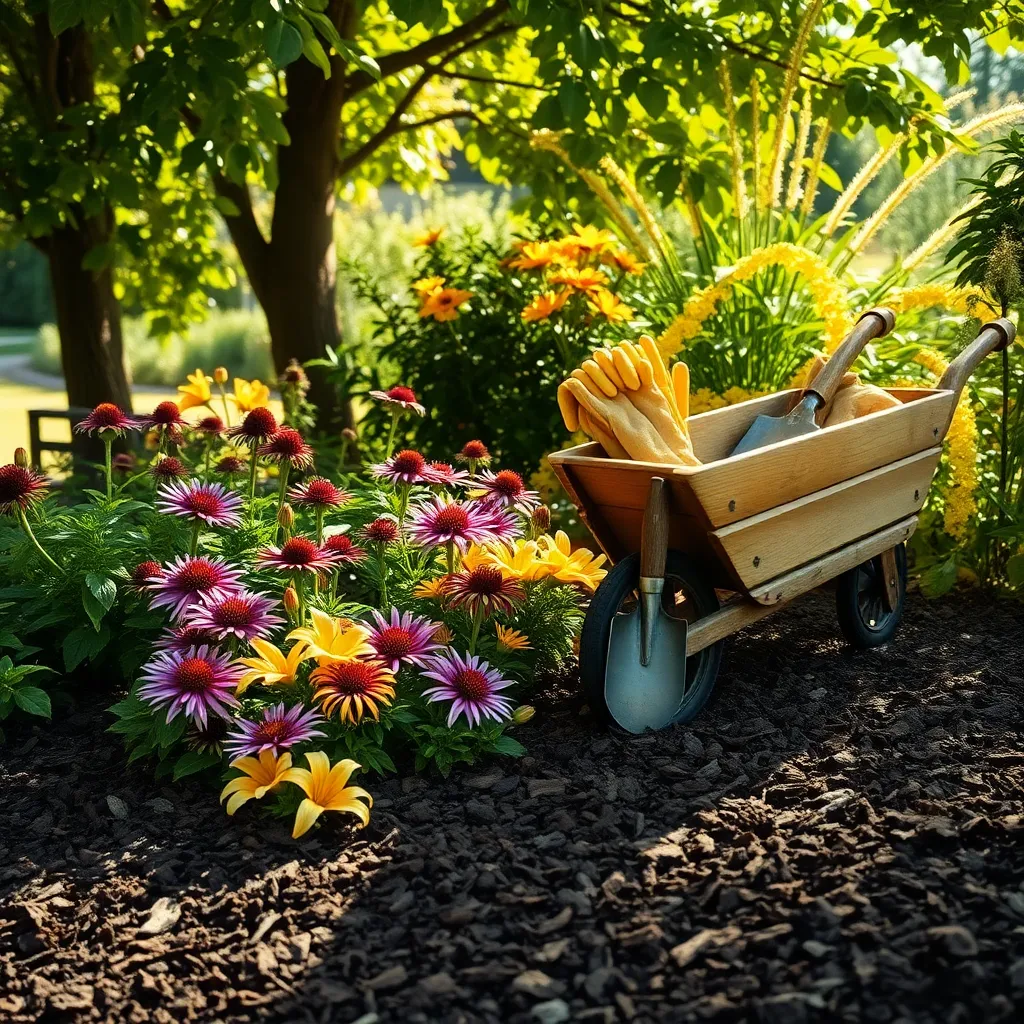
Mulching is a powerful technique that can significantly reduce your garden’s maintenance needs. By adding a layer of mulch, you help retain soil moisture, suppress weeds, and even improve soil fertility over time.
Consider using organic mulches like shredded bark, straw, or compost, which break down and enrich the soil. These types of mulch are excellent for flower beds, vegetable gardens, and around trees and shrubs, offering both aesthetic and functional benefits.
For a more decorative touch, you might opt for inorganic mulches like pebbles or gravel. These materials do not decompose, making them a long-lasting choice, especially in areas where you want to minimize plant care.
Advanced gardeners can experiment with a technique called “sheet mulching,” which involves layering materials like newspaper or cardboard under mulch to create a weed barrier. This method is particularly effective in transforming grassy areas into new planting beds without the need for extensive digging.
Install Efficient Irrigation Systems
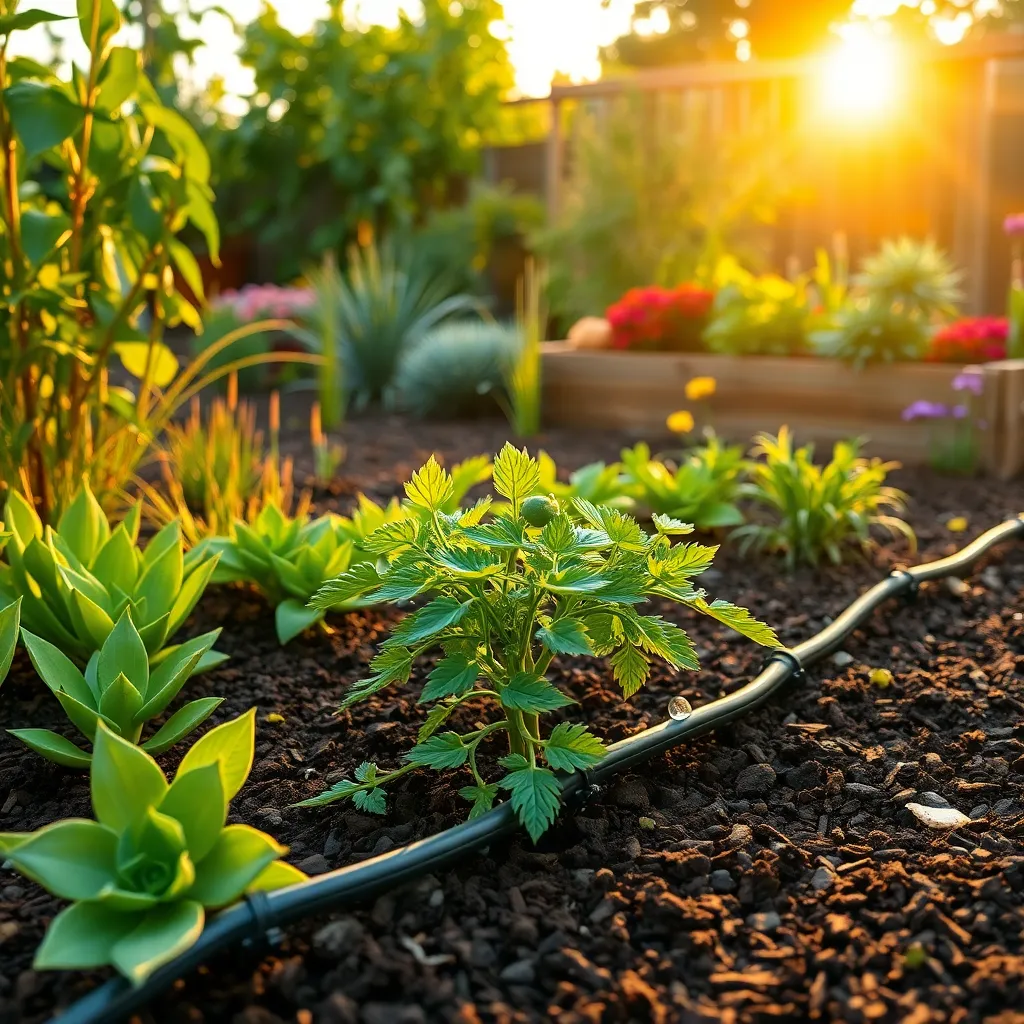
To streamline maintenance, consider installing an efficient irrigation system that suits your garden’s needs. Drip irrigation is an excellent choice for minimizing water waste and ensuring that moisture reaches the roots where it’s needed most.
Unlike overhead sprinklers, drip systems target specific areas, reducing the risk of diseases that thrive in wet foliage. You can also customize these systems with timers for precise watering schedules, helping to conserve water while keeping your plants healthy.
For beginners, start with a simple setup by laying drip lines along your plant rows, ensuring they are secured with stakes. Adjust the emitters to provide the right amount of water based on the plant type and soil conditions.
Advanced gardeners might explore integrating moisture sensors to automate watering further. These sensors can detect when the soil is dry and activate the system, preventing overwatering and promoting optimal plant growth.
Incorporate Low-Maintenance Groundcovers
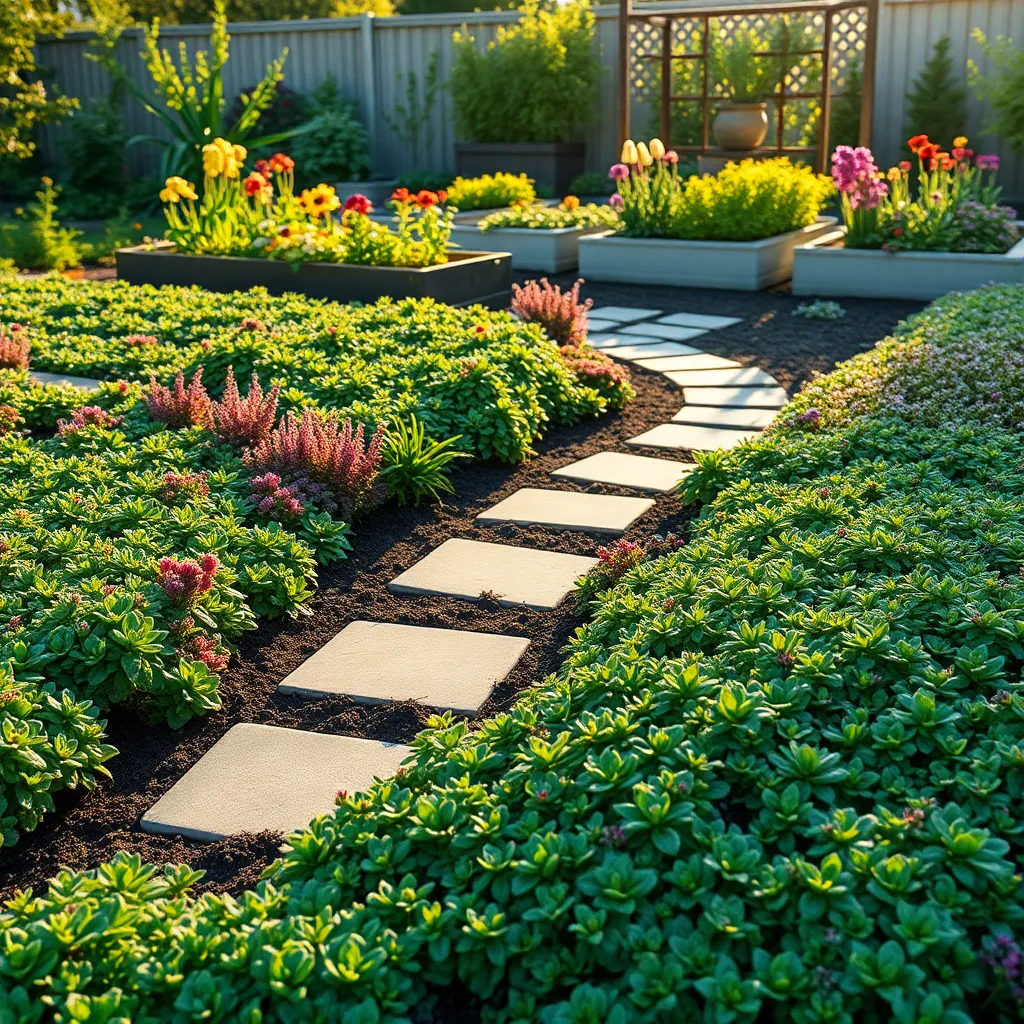
Incorporating low-maintenance groundcovers is a strategic way to minimize garden upkeep while enhancing visual appeal. Groundcovers like creeping thyme, ajuga, and sedum effectively suppress weeds and reduce soil erosion, offering an effortless solution for busy gardeners.
Consider the growing conditions of your garden when choosing groundcovers. Most groundcovers thrive in well-drained soil and benefit from a once-a-week watering schedule, making them ideal for a low-maintenance setup.
For beginners, start with hardy options like ajuga or vinca minor, which can tolerate a range of soil types and light conditions. These plants establish quickly and require minimal attention, allowing you to enjoy a lush garden with less effort.
Advanced gardeners might explore using groundcovers to create a living mulch, enriching the soil as they grow. Experiment with combining different textures and colors to add depth to your garden while still keeping maintenance low.
Implement Smart Pruning Methods
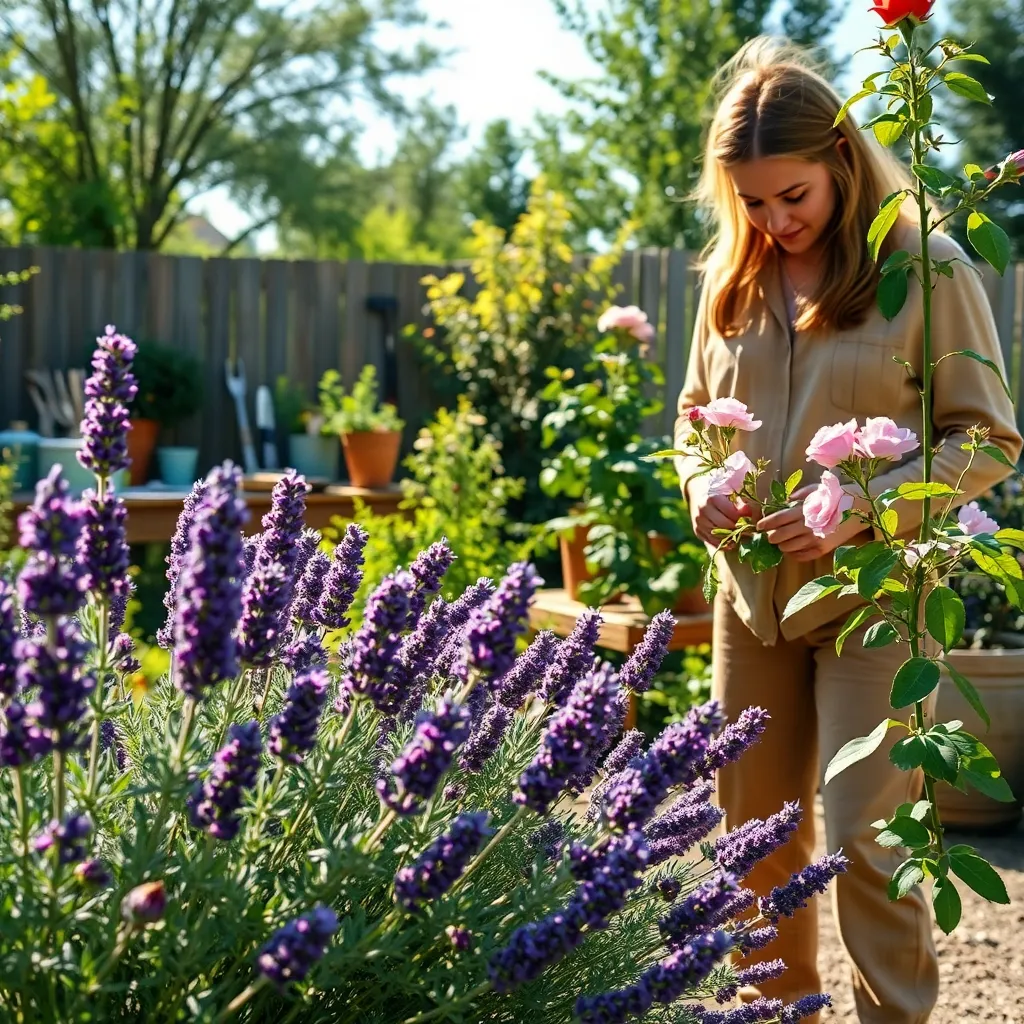
Smart pruning methods can significantly reduce the maintenance required in your garden while promoting healthier plant growth. Begin by identifying plants that need pruning; common candidates include shrubs, fruit trees, and perennials that benefit from periodic shaping and thinning.
It’s essential to use the right tools, such as sharp pruning shears and loppers, to make clean cuts that heal quickly. Regular maintenance will prevent overgrowth, which can lead to more extensive pruning needs and potential plant stress later.
For beginners, a simple pruning schedule is a great place to start. Focus on pruning in late winter or early spring for most plants, as this is when they are dormant and can handle trimming without impacting new growth.
Advanced gardeners might want to explore techniques like thinning cuts, which remove entire branches at the plant’s base, to improve air circulation and light penetration. These methods not only enhance plant health but also minimize pest and disease issues, making your garden easier to manage over time.
Conclusion: Growing Success with These Plants
In conclusion, creating a low-maintenance garden is much like nurturing a healthy relationship: both require understanding, balance, and a bit of planning. We explored five key concepts: choosing the right plants that thrive with minimal effort, understanding the importance of soil health, implementing efficient watering systems, embracing mulching to prevent weeds, and incorporating smart garden design to reduce upkeep. Each step mirrors the care and attention needed to cultivate lasting relationships.
Your next actionable step is to pick one area where you feel your relationship could benefit from a bit more attention—be it communication, quality time, or shared goals—and apply a low-maintenance strategy to nurture it naturally.
Don’t hesitate to save or bookmark this article; it will serve as a handy guide whenever you seek to align your gardening efforts with your relationship goals. Remember, the seeds you plant today in both your garden and your relationships will bloom into a future filled with abundant success and happiness. Embrace this journey with confidence and watch your connections flourish effortlessly.

